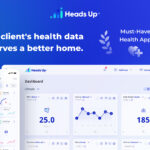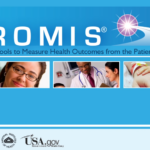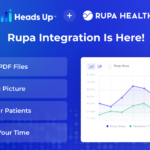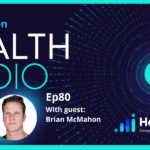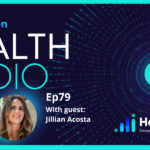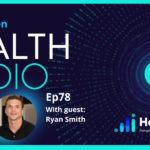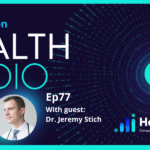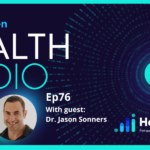by Dr John Limansky | Jul 3, 2023 | Anemia and Iron Deficiency, Weight Loss Markers
Iron is the amount of serum iron bound to transferrin and represents ~⅓ of the total iron binding capacity of transferrin. By itself, it is a relatively poor marker of iron status. May be elevated due to hemochromatosis and other genetic conditions, haemolytic anaemia, liver damage, and Vit B6 deficiency. It may be decreased due to poor iron intake, poor absorption, chronic blood loss, chronic disease or infection, and progesterone birth control pills.
by Dr John Limansky | Jul 3, 2023 | Inflammation, Inflammatory Markers, Primary Health Markers, Weight Loss Markers
The Cardio IQ Advanced Lipid Panel is similar to the NMR LipoProfile and both characterize lipoprotein subparticle size and number. The four most significant particle subtypes are included in this panel and include LDL particle number, Small and Medium LDL particle number, and Large HDL particle numbers. Large HDL particles are protective, so higher numbers are more desirable. For the other three, elevated levels increase your risk of developing a cardiometabolic disease.
The key difference in the Cardio IQ test versus NMR is how each test characterizes subparticle size. Cardio IQ reports two size patterns, or phenotypes (A and B). Pattern B is reported when the smaller diameter particles predominate (Small LDL, specifically) and are at increased risk. Pattern A, on the other hand, suggests a predominance of Large LDL particles.
by Dr John Limansky | Jul 3, 2023 | Essential Vitamins, Vitamin B12, Vitamins & Supplements, Weight Loss Markers
Vitamin B12 is involved in the metabolism of every single cell in the human body and it also plays an important role in the synthesis and formation of the body’s genetic material, DNA and RNA. It is needed for red blood cell formation, the synthesis of choline, brain and normal nerve cell function, normal psychological function, homocysteine metabolism, functioning of the immune system and it also contributes to protein, fat and carbohydrate metabolism. B12 helps to promote optimal utilisation of iron in the body.
by Dr John Limansky | Jul 3, 2023 | Basic Lipid Panel, Cholesterol, Lipid Panel, Primary Health Markers, Weight Loss Markers
LDL is one of the components in the basic lipid panel. The basic lipid panel is a routine screening test that measures the amount of lipids (or fats) that are present in the blood. The two most important lipids are cholesterol and triglycerides. Our bodies use these as cellular building blocks as well as a source of energy. Abnormal levels may lead to a build-up of cholesterol “plaques” within blood vessel walls, which cause the vessels to harden in a process called atherosclerosis. Atherosclerosis, when present, significantly increases your risk of developing cardiovascular disease (CVD). The basic lipid panel provides valuable information and when combined with other blood tests and risk factor assessment (age, smoking status, family history, etc.) it guides healthcare providers in their treatment recommendations.
The basic lipid panel includes total cholesterol, which is an estimate of the body’s entire cholesterol content, low-density lipoproteins (LDL, or the “bad” cholesterol), high-density lipoproteins (HDL or “Good” Cholesterol), as well as triglycerides. Other subtypes of lipids are often reported as well.
by Dr John Limansky | Jul 3, 2023 | Blood Sugar and Insulin, Complete Blood Count (CBC), Diabetes Markers, Diabetes Screening and Management, Metabolic Panel, Pancreatic Function, Primary Health Markers, Weight Loss Markers
Hemoglobin A1c, or glycated hemoglobin, is a blood test that represents an estimate of blood glucose levels over the previous 2-3 months. Hemoglobin is responsible for binding oxygen for transport throughout the body. Hemoglobin can also bind glucose, which is more pronounced when glucose levels are elevated. The hemoglobin becomes glycated and remains in circulation for the remainder of its 120-day lifecycle.
The A1c represents the percentage of hemoglobin that is glycated. This test can be used to screen for diabetes as well as to monitor treatment response.
by Dr John Limansky | Jul 3, 2023 | Basic Lipid Panel, Lipid Panel, Primary Health Markers, Weight Loss Markers
HDL is one component of the basic lipid panel. The basic lipid panel is a routine screening test that measures the amount of lipids (or fats) that are present in the blood. The two most important lipids are cholesterol and triglycerides. Our bodies use these as cellular building blocks as well as a source of energy. Abnormal levels may lead to a build-up of cholesterol “plaques” within blood vessel walls, which cause the vessels to harden in a process called atherosclerosis. Atherosclerosis, when present, significantly increases your risk of developing cardiovascular disease (CVD). The basic lipid panel provides valuable information and when combined with other blood tests and risk factor assessment (age, smoking status, family history, etc.) it guides healthcare providers in their treatment recommendations.
The basic lipid panel includes total cholesterol, which is an estimate of the body’s entire cholesterol content, low-density lipoproteins (LDL, or the “bad” cholesterol), high-density lipoproteins (HDL or “Good” Cholesterol), as well as triglycerides. Other subtypes of lipids are often reported as well.

